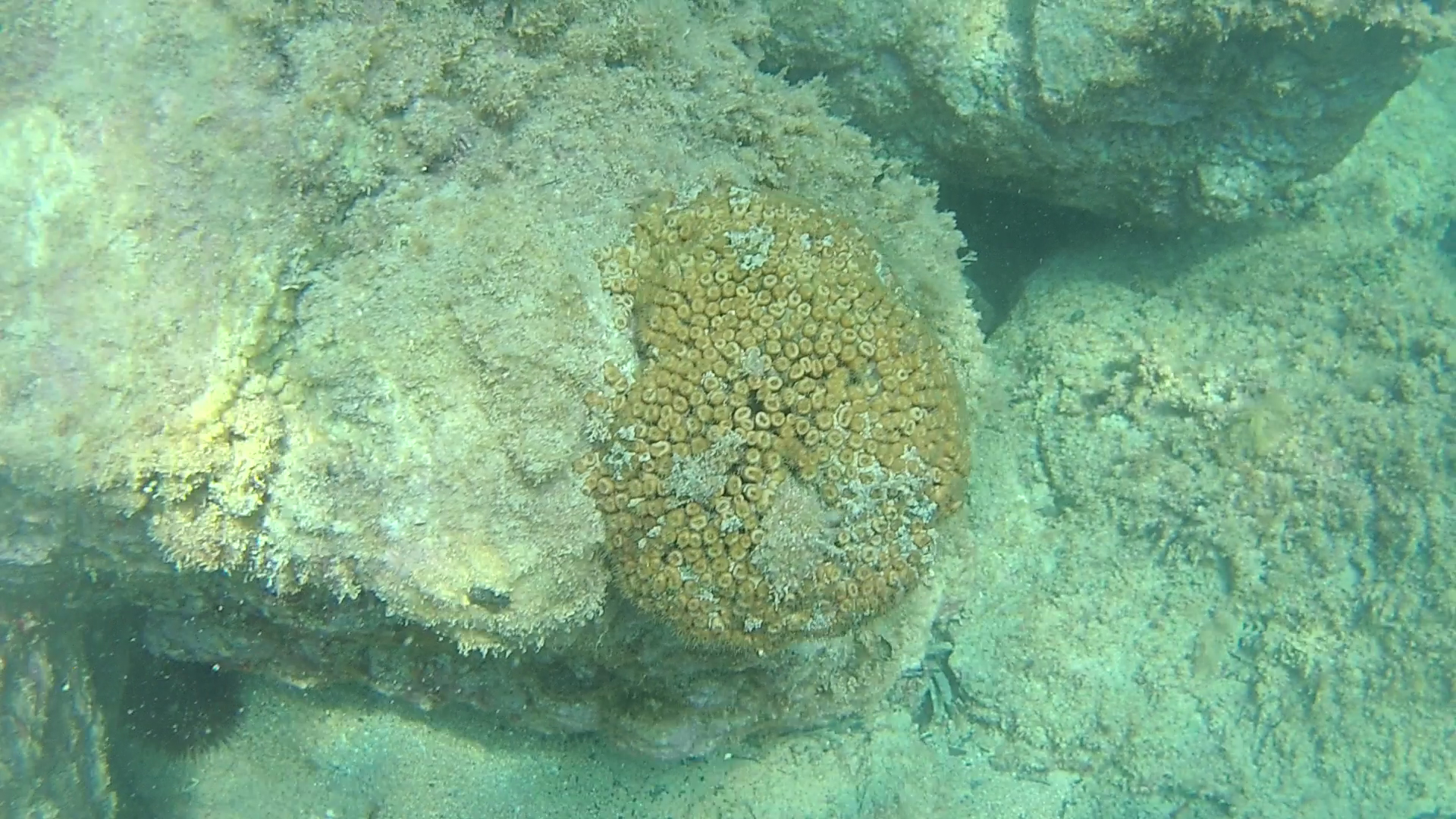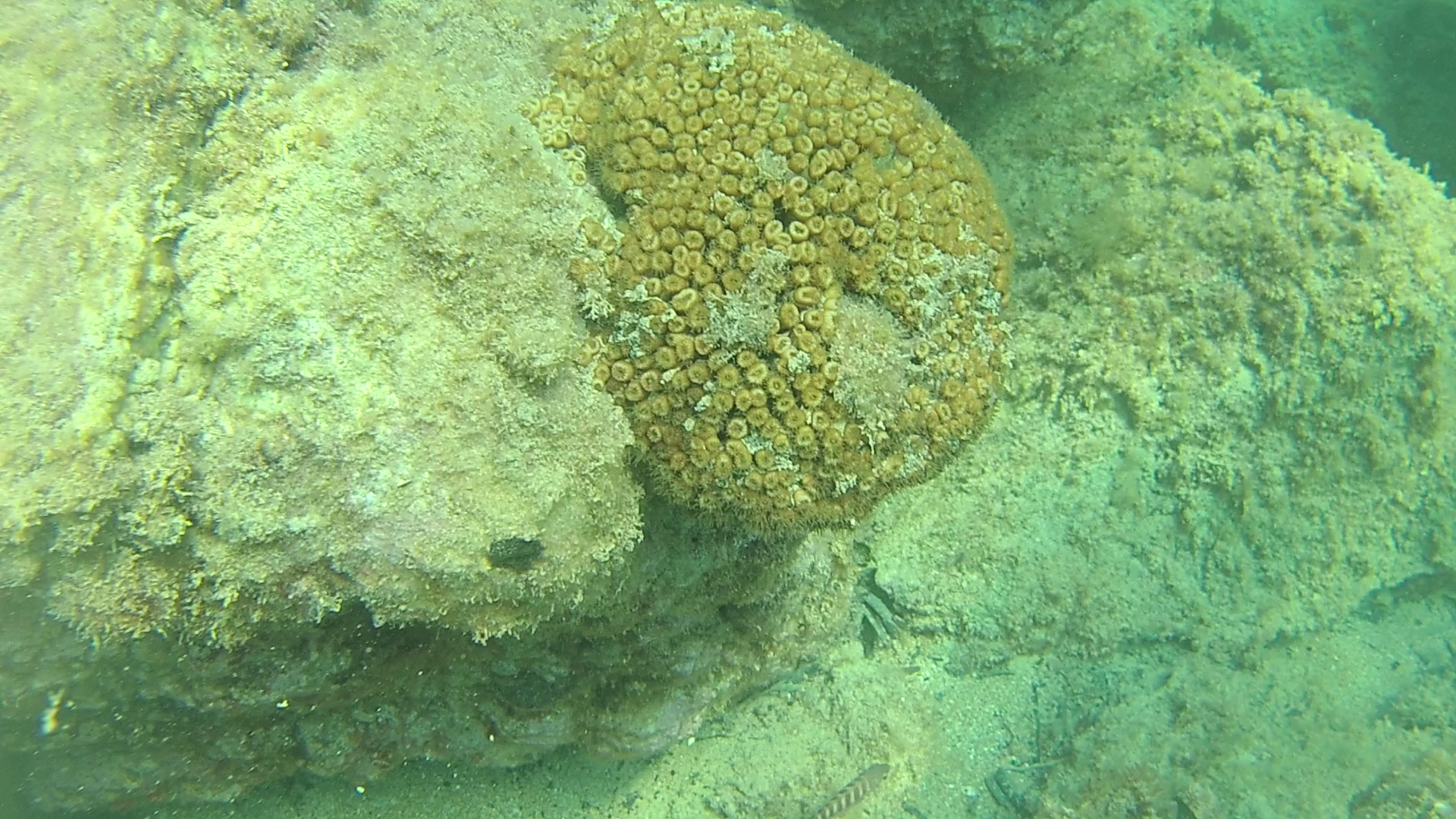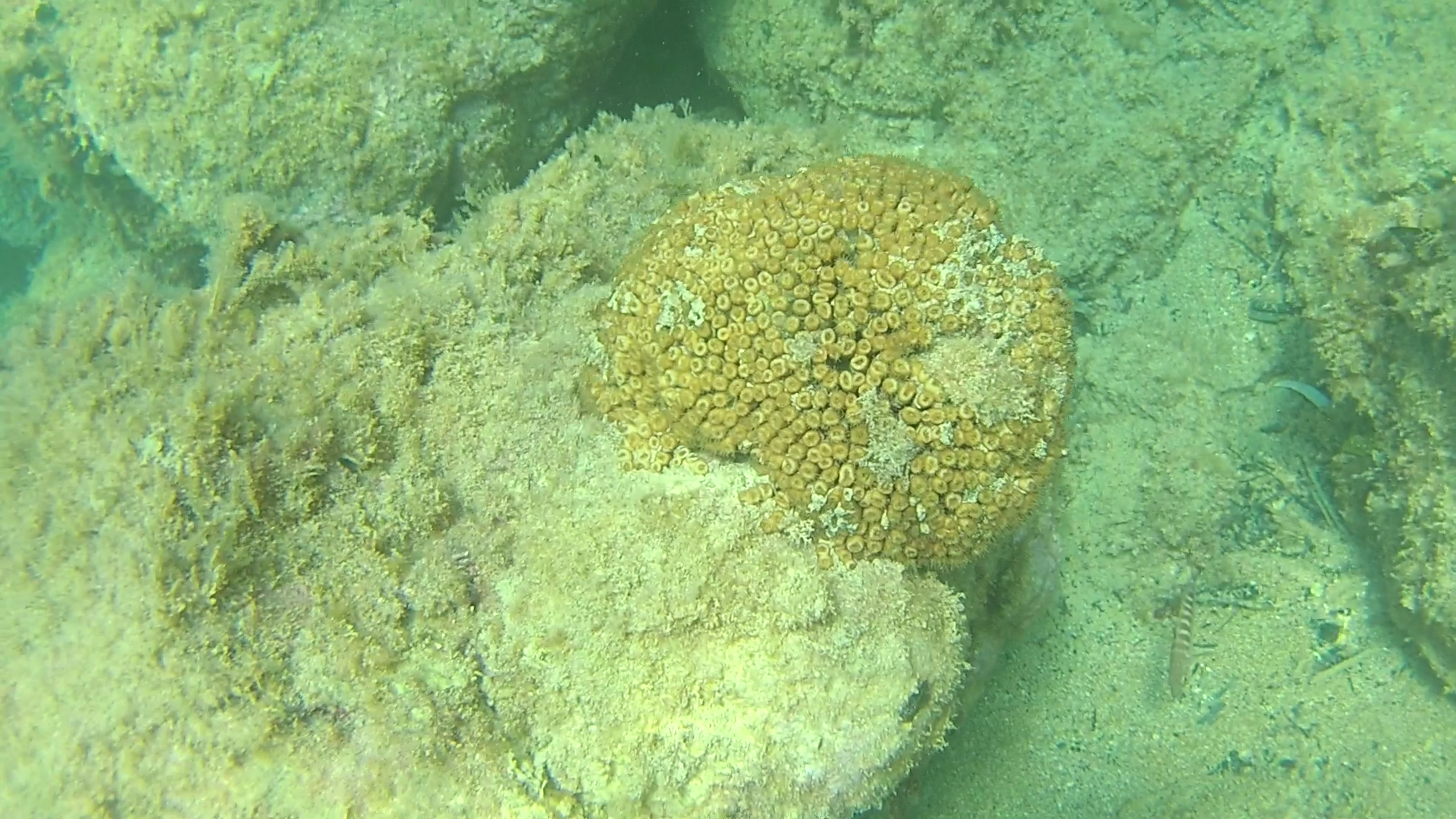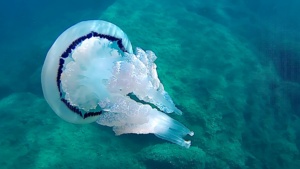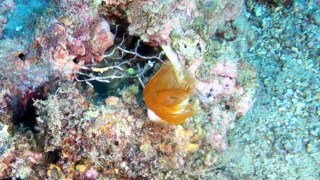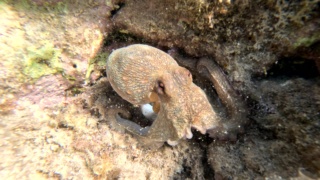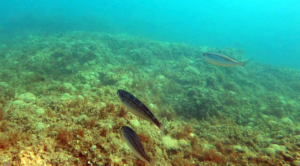In this movie we see two colonies of Cladocora caespitosa or pillow madrepora (Coral Loaf) found in a few meters of water, the first of about 20 cm in diameter and the second much smaller than about 5 cm, but with the everted polyps in search of food.
Coral Loaf (Cladocora caespitosa) phylum cnidarians, also commonly known as madreporaria for the typical shape of its colonies, is a madrepora of Hexacorallia class. Polyps light garnet color, about 5 millimeters in diameter forming pillow-shaped colonies, in symbiosis with the symbiodinium algae. It produces calcium carbonate deposits which form the limestone caskets in which he lives. It is the largest madrepora the Mediterranean Sea, even reaching 50 cm in diameter.
Author: Andrea Cirivasi
theBlue.it
Gallery Madrepora Cladocora caespitosa IntotheBlue.it
Coral Loaf (Cladocora caespitosa Linnaeus, 1758), also commonly known as the loaf madrepora due to the typical shape of its colonies, is a madrepora of the Hexacorallia class.
Description
Polyps of light garnet color, about 5 millimeters in diameter, forming cushion-shaped colonies, in symbiosis with the zooxanthellae of the genus Symbiodinium. It produces deposits of calcium carbonate with which it forms the limestone cases in which it lives.
It is the largest madrepora in the Mediterranean Sea, reaching even 50 centimeters in diameter.
Distribution and habitat
It is an endemic species of the Mediterranean Sea where it is already reported from the upper Pliocene.
Common on rocky bottoms, from a few meters up to 60 meters deep.
In the marine lake Veliko Jezero, inside the natural reserve of the island of Mèleda in Croatia, the presence of a small coral reef consisting of Cladocora caespitosa is reported. It is one of the few cases of coral reefs adjacent to the Mediterranean Sea.
Reproduction
Colonies grow by budding, but the species spreads through the settlement of planktonic larvae on the substrates most suitable for colonization.
 English
English Italiano
Italiano
